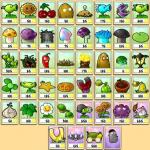How to make a plaster vase with your own hands. DIY plaster vases: the easiest way to make
No matter how exclusive designer home decorations are, we value homemade decor items much more. This is easily explained by the fact that the process of creating crafts is directly related to creativity and your own ideas about beauty. It's never too late to get started, especially if you have a cast on hand. This material is easy to process, perfect for products of any size and any complexity. Nevertheless, it is better to start mastering gypsum stucco molding with a simple but remarkable object - a vase.

For a plaster vase you will need:
Juice box or glass (plastic) vessel;
Plaster bandage or plasticine;
Gypsum powder;
White acrylic paint and enamel;
Capacity for mixing the solution;
Food oilcloth;
Paints, varnish, volumetric ornament.


Two ways to create a plaster masterpiece with your own hands
Method 1: box + plaster. An ordinary juice box with regular geometric shapes often becomes the basis for plaster products. And so, the first thing you need to do is measure the height of the future vase from the bottom of the box upwards and add 1.5 cm in reserve, and cut off the remaining upper part. In each of the corners of the form, make cuts 1.5 cm deep, which subsequently need to be bent to the front side, pressed and tied with threads. Put the prepared base on cling film (so as not to stain the table surface when applying plaster).

Next, you should prepare a gypsum solution. To do this, take any suitable container, pour the powder there, gradually add water and stir until a mass of medium density is obtained. Place the bandages cut into 40 cm strips into the prepared solution for a few minutes.


After that, you can start sculpting. We begin to wind the bandage one by one on the walls of the box, removing the excess solution from the surface. The wrapping should start from the top from the folded edges, slowly dropping downward. After complete wrapping, the product must be allowed to dry. Apply acrylic paint to the finished surface, and after it dries, apply white enamel.

The final stage is removing the box base and decorating the finished vase. You can decorate plaster decor items with your own hands with both ordinary paints and more sophisticated ornaments (for example, patchwork fabric scraps, buttons and beads, ribbons, twigs, shells, etc.).


Method 2: plasticine + gypsum. Plasticine is an ideal material for creating the base of a future vase. Due to its soft structure and plasticity, you can easily give the product any shape, not necessarily with the correct geometry. Plasticine must be divided into 5 pieces and rolled out the layers: one round (for the base), two smaller layers and two larger (for the walls). Please note that the base should not be very thin.

Lay an ornament on the prepared layers - dry herbs, flowers or leaves. Thoroughly "roll up" dead wood in order to get a distinct relief, and then remove it. Further, we collect all 5 layers into a single shape with a printed relief inside; at the joints we create thick seams to prevent deformation of the base. We place a vessel (glass jar or plastic bottle) in the middle of the workpiece, having previously wrapped it with an oilcloth or napkin.


Holding the vessel strictly in the center of the mold, fill in the plaster solution and leave it for several hours until it is completely dry. As soon as the mortar is dry, remove the plasticine ball - you will be surprised at the elegance of the relief pattern on the plaster surface! At the last stage, you need to carefully remove the vessel and let the vase dry from the inside.

A simple technique of applying bituminous wax will help to emphasize the beauty of the relief of the vase. It gives décor a vintage look, giving the illusion of a stone surface. To decorate, take bitumen wax and brush it onto the walls of the vase. Remove the film immediately after application with a paper towel. Next, sprinkle the surface with talcum powder, and fill the relief crevices with regular wax. Thus, the vase will acquire a stone texture with “centuries-old” talcum powder coating.

You can make beautiful vases from almost anything. Therefore, today we bring to your attention a master class on a plaster vase with our own hands.
Gypsum is a fairly malleable material from which you can make anything you want. Plaster vases will look stylish and elegant, decorating your interior, or they will be a wonderful gift for any celebration. After all, as you know, the best gift is a handmade gift. And if, in addition, the gift is also as practical as a vase, then there is no need for extra words!
Let's take a look at a few workshops on creating interesting plaster vases with our own hands.
Plaster vase
To make such a plaster vase, take:
- 2 liter plastic bottle;
- gypsum;
- plaster putty;
- bandages.
Getting started, first cover the table surface (or another work surface on which you will make a vase) with cellophane or cling film. This should be done in order to make it easier to remove the plaster after finishing the work.
We dilute the gypsum with water to the consistency of thick sour cream, wait until it grasps a little. Then we lay out the circle - this will be the bottom of the vase. Put a bottle on top of this circle and start applying plaster.
Note! You will have to work quickly enough, since gypsum tends to harden quickly.

Now we wrap the part of the bottle covered with plaster with bandages, leave it for 30 minutes to dry the plaster. You need to close up with plaster and bandages just above the middle, so that later you can easily pull out the bottle.

Next, we dilute the plaster putty and apply it over the bandages. Then again a layer of bandages, and again a layer of putty. The bottom of the vase is ready. For the top, you can take an additional form, for example, a plastic jar.

We form the upper part of the vase in the same way - a layer of bandage, putty, another layer of bandage and a layer of putty. To make the vase strong and stable, you can apply a few more layers of putty on top, and after complete drying, sand it with sandpaper.

We send the gypsum blank to dry for a day in a warm place. You can use acrylic or varnish paints to paint a plaster vase.
Carton boxes

Throwing away the juice box, few people think that it can be used to make an excellent vase or flower pot.
We need:
- juice box;
- gypsum;
- brushes;
- a plastic cup or other container of the depth that you want to get a hole in the vase;
- acrylic paints.
Cut the box so that you get a cardboard vase of the height you need. Dissolve the gypsum to the consistency of thick sour cream and pour into the box.
While the plaster is still fresh, place the cup inside the plaster box, creating a hole for the plants.

Leave the vase to dry completely. Then carefully remove the box and take out the cup. Sand the surfaces with sandpaper. The vase is almost ready, all that remains is to decorate it.
We have chosen a method of applying paint with a lace stencil. To do this, they took lace ribbons and fixed them on a plaster blank.

We spray paint on the entire surface of the vase, you can also cover the inside. Let the paint dry completely and remove the lace ribbons.

This vase can be used as a succulent pot or, if you have made a deep hole, put flowers in it.

Another option

This master class is a little more difficult, but nevertheless it is very interesting to make such a vase, and it will look simply gorgeous in the interior!
For work we need:
- gypsum;
- plasticine;
- twine;
- a mold for pouring (you can use a baking dish of a suitable shape and size);
- seashells (any small parts can be used).
Cover the filling mold with baking paper. We roll the plasticine with a sausage and roll it out to the size of the shape and, accordingly, the future walls of the vase. We dilute gypsum to a state of thick sour cream.
We make prints of shells on plasticine, then place it in a mold. Fill with gypsum 3-4 cm. In total, you will need 5 walls for a vase (you can make both triangular and rectangular).

Until the plaster has completely solidified, after about 10-15 minutes it must be carefully removed from the mold. We leave the finished future walls of the vase until it dries completely.


When the tiles are dry, you need to drill holes on the sides. We connect the tiles and tie them tightly with twine.

We put the assembled structure vertically, and fill the bottom with plaster. After 15-20 minutes, remove the walls, level the bottom in the shape of a vase, and leave it to dry completely. We drill holes in it to connect with the walls.

Now you need to paint all the details. You can use acrylic paints of any color. And you can use the means at hand. For example, the color of a vase, as in the photo, will turn out if you mix shoe polish with vegetable oil.

Then we cover all the parts with varnish and tie together with twine.
Of course, you don't need to pour water into such a vase, but you can put a small glass or plastic container in it so that you can put fresh bouquets in the vase.

Do you think that only professionals can work with such a fragile and quickly solidifying material? You are deeply mistaken, because now you will see one way with which you can make plaster vases with your own hands in a short period of time. To do this, you do not need to purchase an expensive segment, but you will have to carefully perform all stages of work. The main thing is patience and a little skill.
And you will also have to visit last year's field, where ears of wheat or oats grew. Do you think that there is nothing there after the snow? In vain! After the water disappears, you can find so many interesting things! Moreover, this herb will be needed to create a surprisingly beautiful relief on a future piece of furniture.
Diy plaster vases: what to buy?
We go to the store for:
- plasticine - 2 boxes, you can of the same color;
- paraffin candles (2 pcs);
- liquid soap - 20 g;
- lemonade / juice / milk in a low bottle with a medium neck - 1 pc;
- gypsum (dry) - 0.5 - 1 kg;
- cling film or cellophane bag;
- cotton material.
DIY plaster vase: working!
We roll out 5 plump layers from plasticine (large 2, slightly less also 2, oval for the bottom 1).
Lubricate one side with soap and lay on the damp wall what was found on the field, pressing it so that the edge contour is clearly visible.

We remove the plants.

We collect plastic blanks in a vase and pinch the ribs well: do not be afraid to make the tucks thick, the main thing is that the diluted gypsum does not leak and the blank does not deform. Flora prints should be inside.

Wrap the bottle with material, on top of it with cling film in 5-6 layers.

We send the container to the bottom, clearly in the center.
Continuation of the "banquet"
- We dilute the gypsum according to the instructions for it.
- Fill in half, holding the bottle.
- As soon as the solution begins to harden, add to the brim.
- Setting time - look at the plaster package, but you won't find it, so don't touch the mold for 3 hours.
- We take out the bottle and leave it for another 2 hours.
- We remove the plasticine and get the finished product.

Decor technique for a plaster vase "Old Stone"
Let's try to master the "old stone" technique.
- Wear rubber gloves.
- Spread bituminous wax on the surface of the walls with a brush.
- Remove the leftovers with a napkin.
- Take baby powder and sprinkle it over the surface.
- With a new dry brush, spread over the surface so that talcum powder gets into each cavity.
- Melt the candles.
- Use a brush to apply it to the surface of the vase.
- Let dry and buff with a soft cloth.

The talcum powder in the wax will age the surface, so you have an amazing piece of furniture that can be displayed prominently.
Today, only the lazy is not engaged in improving the design of his home. Fashion trends can satisfy the most sophisticated tastes of demanding consumers. At the same time, at all times, there was a demand for interior decoration with tall floor vases. However, their affordability does not always coincide with the desired appearance. Like any other thing, a floor vase can be made by hand. Such a beauty will be in the desired shape, and in the desired color scheme, and much cheaper than its store counterparts.
Materials for work:
Glass jar with a capacity of 3 liters - 2 pcs.;
Tea saucer - 1 pc .;
Plastic container for preserves - 1 pc .;
Silicone sealant - 1 bottle;
Liquid PVA glue (construction) - 1 liter;
Building alabaster - 4 tbsp;
Potato starch - 100 gr.;
Egg lattices - 4 pcs.;
Vegetable oil - 1 tablespoon;
Vaseline - 1 tablespoon;
Three-layer napkins - 2 pcs .;
Plasticine - 1 box;
Old tube of PVA glue with a narrow nose - 1 pc .;
Glue "liquid nails", paints white and "gold", blush, eyeshadow, face powder, brush, colorless acrylic varnish, water.
Stages of work:
First stage: we form the basis.
We turn one jar upside down and glue the tea saucer turned upside down to it with "liquid nails".
We glue the bottom of the second can to the bottom of the same can.

We cut off the bottom from the preserves container. Glue the inverted container to the neck of the second can.

Leave the base to dry for 1 day.

Second stage: give the vase the outline of the vessel.
Finely chop the egg grates.

Fill with water so that all the torn mass is immersed in it. We leave it overnight.

Wring out the soggy grates.

We tear large pieces. Fill the whole mass with PVA glue.

Thoroughly, until a homogeneous gruel is obtained, mix the soaked grates.

We fill the space between the neck of the jar and the container with the egg mass.

Apply a thin layer of egg mass over the entire surface of the jars.

We dry the base for 2 days.

We paint it white.

The third stage: we apply a volumetric drawing.
We print out the stencil we like.

We make cuts along the contours, cut out the necessary moments.


We place the drawing on the vessel in a checkerboard pattern in a straight and inverted form (2 times at the top, 2 times at the bottom; top and bottom facing each other).


Draw voids and cuts with a pencil.


We squeeze the silicone sealant into an empty tube from PVA.

We put a sharp nose on the tube and squeeze the sealant along the contour of the drawing.

If necessary, make adjustments with a toothpick.


Dry the sealant for 1 day.

With superficial movements with a large brush, apply tint with blush to the drawing.


Stage four: making a silicone mold.
We mix potato starch and silicone sealant.


Knead thoroughly until a doughy mass is obtained.

The surface of the figurine blank (in this case, a magnet) is heavily coated with Vaseline.

Press the blank face down into the flattened dough.


Gently prying with a knife, take out the workpiece.

Fifth stage: casting the figures.
Lubricate the inside of the silicone mold with vegetable oil (pour it in, then turn the mold over and pour out the oil).

Pour a tablespoon of alabaster (or gypsum) into a container.

Pour a spoonful of water there, mix. If the solution turns out to be thick, add water.

Fill the silicone mold with alabaster mortar.


We leave the solution to harden (you can check the readiness by pressing the nail on the figure - the trace should not remain on the surface). We pry the figure with a knife and take it out of the mold.

We repeat the preparation of the solution and the filling 3 more times.

Sixth stage: we paint the angels.
We paint over the blanks with white gouache.

Matting the bodies of the angels with face powder.

We dye our hair.

We draw sponges.

Draw the eyelids and eyebrows with a pen.

Cover the extra layer of powder with white gouache (next to the bodies of the angels).

Draw the wings with gold.

Apply "liquid nails" to the back surface of the figures and glue them onto a vase.


Seventh stage: making roses.
Knead the plasticine, lay it on a hard surface with a thin plate, cut it into squares. In each square we make cuts in a circle from the center.


Gently prying the central center, we twist the spiral, moving from the center to the edge. We bend the square corners like large leaves.


We paint the roses white.

We tint them with blush in the color of the volumetric pattern.

We apply gilding around the edges.

We fasten the roses to the vase with “liquid nails”.


Unique interior decorations, made with your own hands and to your taste, are always valued more than any, even the most expensive, purchased products. Plaster molding is a huge field for creativity. Many people think that only professionals can work with gypsum on special equipment, but this is far from the case. A master class on creating a beautiful plaster vase quickly and simply with your own hands will help you start working in this technique even for beginners without any special knowledge and skills.
This is not a difficult and exciting activity, the main thing here is desire and accuracy. In the future, you will be able to make beautiful products of any complexity.
DIY workshop on a plaster vase under an old stone

This master class describes one of the simplest and most understandable vase making techniques, and the result will be gorgeous!
To make a vase you will need:- Two packs of plasticine (color is not important, solid is suitable)
- Two paraffin candles
- About 20 g of liquid soap
- Low-rise bottle with a middle neck
- Dry gypsum (500 - 1000g)
- Cling film or cellophane bag
- Cotton fabric
- Any dry grasses with stems, ears of wheat or oats
- Baby powder
- Bituminous wax and brushes
To begin with, we roll out 5 layers of plasticine: 2 wider, 2 narrower and one oval for the bottom.
Lubricate one side of the plasticine blanks with soap and lay out dry plants. We press them so that the outline is imprinted, forming a clear pattern.
Putting the blank into a vase with prints inside. The main thing is to pinch the edges well so that the plaster does not flow out later.
We wrap the bottle with a cloth and 5-6 layers of cling film and set it in the center of the vase.
We dilute gypsum powder according to the instructions. Holding the bottle, fill it up to the middle of the vase. When it starts to harden slightly, fill in the rest to the brim. The setting time of the gypsum is usually indicated on the package, but if it is not there, it is better to wait 3 hours before pulling out the bottle. After that, we leave the vase for another 2 hours and remove the plasticine.
The vase is ready. Now you can decorate it.
- With gloves, apply bituminous wax with a brush. Carefully remove the remains with a napkin.
- Sprinkle the surface with baby powder, distribute it with another brush.
- Having melted the candles, apply paraffin with a brush.
- We are waiting for the vase to dry and polish with a soft cloth.
Making a vase made with a box and plaster bandages

- Juice box or other well-shaped container
- Plaster bandage
- Dry gypsum
- Acrylic white paint or enamel
- Mixing vessel
- Cling film
- Paint and brush
We cut the box to the height of the future vase plus 1.5 cm. In the upper part we make cuts 1.5 cm deep, bend the edges, press them to the front side and wrap them with threads.
We put the box on food captivity so as not to stain the surface with plaster.
Prepare plaster mortar in a suitable container. You should get a mass of medium density.

Cut the bandages into strips of 40 cm and put them in plaster.
Let's start sculpting. Wrap the prepared bandages on the box walls. We begin to work from the top, gradually going down. Then we leave the vase so that it has time to dry.
Then we apply white acrylic paint and enamel.
After that, the base box must be removed. Now you can start decorating the vase.
You can paint the vase with the colors of your choice, or use a variety of beads, buttons, scraps of fabric, shells and ribbons.
Cut off the neck and lower part from a liter plastic bottle.
We roll out a layer of plasticine and insert bottles into it.
Pour gypsum into the bottle, but not to its full height. We wrap a bunch of wooden skewers with foil and tape to make it look like in the photo:
We insert the bundle into the bottle, holding it if necessary for a couple of minutes.
When the gypsum hardens, cut the film and tape and remove the skewers.
We take out the vase from the plasticine. We cut and remove the plastic.
When the vase is completely dry, level the surface with sandpaper, cover with a layer of PVA glue and decorate the vase in any way you like.
Related videos
For those who want to learn new ideas for creativity, we have prepared a selection of video tutorials on the topic of the article:






